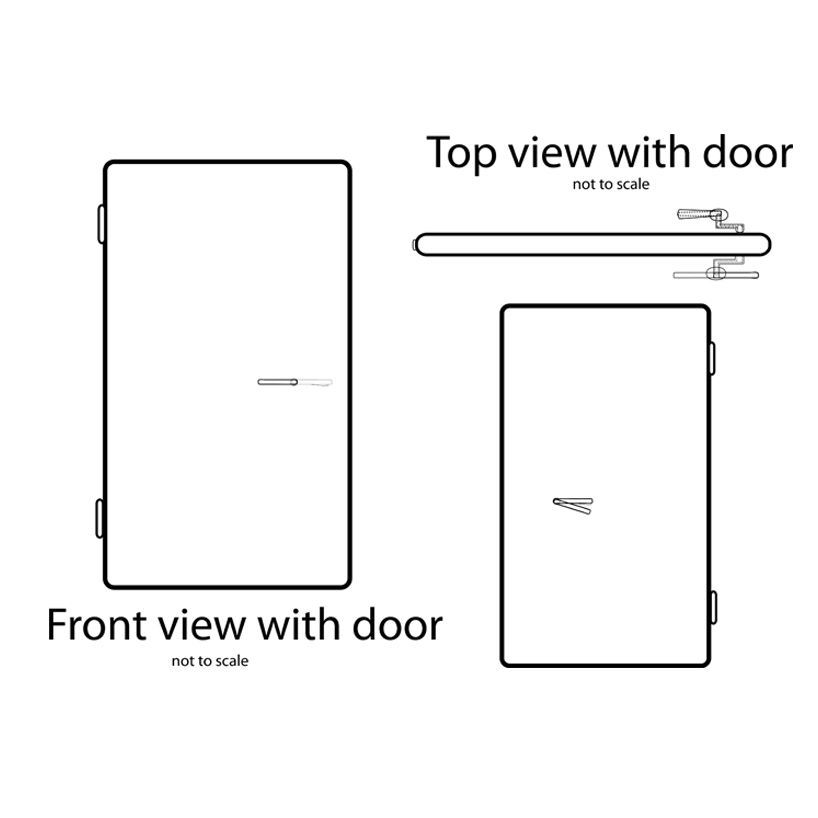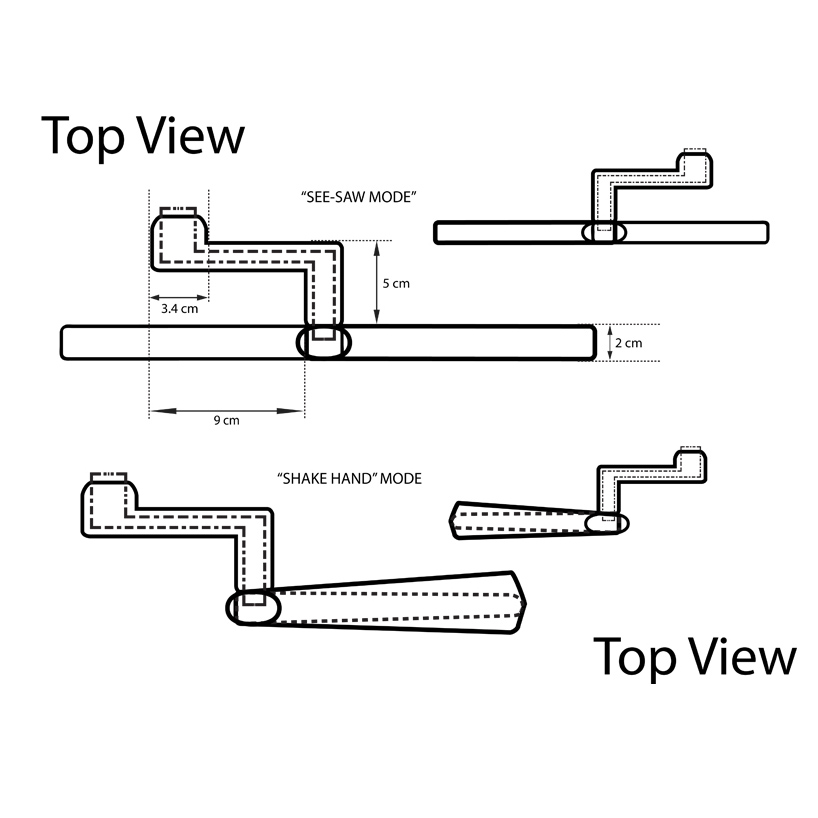
custom(er)ization by an cheng lin from singapore
designer's own words:
Doorknobs can be difficult for the young and elderly to operate. For this reason, I have decided to re-design the lever-operated handle, rather than the knob, as the lever does not require a tight grip hence bringing about convenience, which is a key concern for me.
This door handle was designed on the basis of ease of use and customization. In the ever changing landscape of architecture and interior design, something as staple as a door handle needs to be customizable not just on the exterior but the way we use it so that it is more versatile. A customizable function door handle is what I strive to achieve with this design.
The function of the room determines what kind of door handle it needs hence there are two modes to my design. The subtle role the door handle plays is often missed but always felt subconsciously. These two modes are contrasting in terms of how we interact with it and serve totally different purposes so that this handle has a range of functions that the users can choose from to suit their intentions.
The “Shake-Hand” mode is to be used when some sort of “resistance” is required so that the user can pause for a short while to contemplate. It also serves as “deterrence” so that user thinks twice before deciding to use it. This is necessary if the door handle is for a room of importance and the owner not wanting people to have access to it easily. This effect is proven with the research that square toilet rolls were found to be able to reduce paper wastage in toilets significantly due to the small resistance it creates as compared to the round ones when being used. This handle works in a similar manner as a traditional door handle except the lower arm moves while the upper arm does not. When in this mode, the door opens when the lower arm moves upwards and touches the upper arm. This resembles the gesture of shaking hands.
While the “See-Saw” mode was created to provide maximum ease of use so that the door can be opened with minimum energy needed. To open the door, push the left or right handle up or down. This is so that the room is easily accessible and entry requires minimum effort. Both sides operate independently and any movement upwards or downwards will ensure the opening of the door. One instance in which this handle can be used is the doors of toilets so as to reduce the area of the hand needed to operate the handle and therefore improve hygiene significantly.
The switching of the modes is done with the movement of the lower arm. By moving it to be collinear with the upper arm, it is switched to “See-Saw” mode and when it is moved back, it switches back to “Shake-Hand” mode. The upper arm is fixed at all times and a lock button is located with it.
My ultimate goal is to alter the function of the door handles hence i am not too concerned with the materials used to construct it. It can be from wood to stainless steel as long as it fits into its surroundings and do its part.
Door handles play a major role in our lives as we interact with it almost everyday for numerous times. In spite of their intense importance they have been downplayed in comparison with other aspects of a house. They play a subtle yet vital role in how we interact with the door and hence the room and its contents. They are irreplaceable and perform both aesthetic and functional roles.
projection
 front
front
 top
top